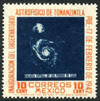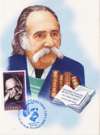Philately — No longer just stamp collecting
When I was about 10, living with my family in the tiny village of Arenas Valley in a remote corner of the least-populated state in the United States, New Mexico, a friend introduced me to stamp collecting. Stamps soon became my window on a larger world, about which I was very curious.
Today, I look back on decades of “seeing the world,” sometimes at my peril: a plane crash in 1962 and becoming a Vietnam War casualty in 1966 put stamp collecting in perspective.
Stamps no longer fascinate me in the same way they did when I was 10, but I still collect them, not because they’re valuable, which they rarely are, but because they are artifacts that illuminate that our planet’s tortured social and political past and often illustrate the gulf between what governments say and conditions that actually exist.
My philatelic interests aren’t confined to stamps. I also collect covers, which are used envelopes. A stamp is just a stamp, so to speak, but a cover with its address, return address, postmarks, cancellations, labels, illustrations — and, yes, stamps — can be philatelic gold.
The following web pages are based on various covers in my collection — and some stamps — that don’t necessarily fit into my postal history collections related to 20th Century wars, civil aviation, and New Mexico.

Stars on Stamps: Poor observing weather (clouds, fogs, turbulent atmosphere, and Northern Lights) prompted the philatelist in me to search for “stars on stamps.” I found a virtual universe of collectable stamps, covers, and postcards featuring not only stars but nebulae, galaxies, constellations, comets, asteroids, telescopes, observatories, and famous astronomers.

Letter from Castleknock: Early in 1890, a homesick but determined boarding student at Dublin’s Saint Vincent’s Castleknock College writes to his father to ask for advice about ill-fitting boots. His letter serves as a window on life in Ireland under British rule.

William Saroyan posts a letter: I bought an Irish airmail cover (used envelope) from an on-line postal history dealer in Ontario. Only a small image had been available when I purchased it, but it was well worth the price — just 69 cents. When it arrived in the mail, I was astonished to see that it had been posted by my favourite author, the Armenian-American William Saroyan.

What to do when you inherit stamps: When stamp collectors inherit a stamp collection, they know they’ve got some interesting prospecting ahead, and may strike gold. But non-collectors, while they probably know that stamps can be valuable, don’t have a clue what to do with their new collection. This article helps to sort out their confusion.